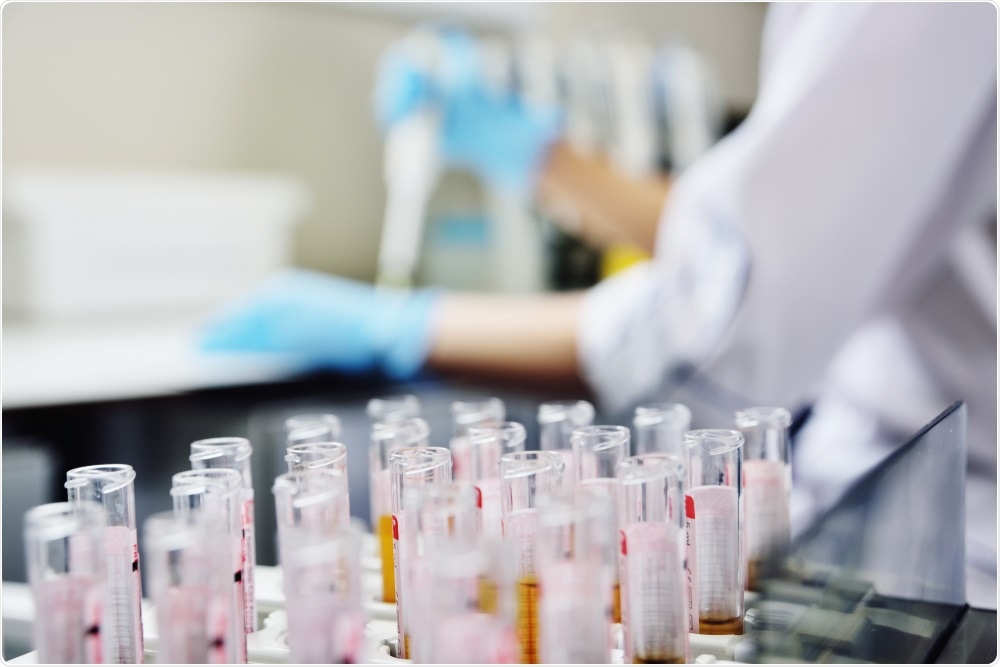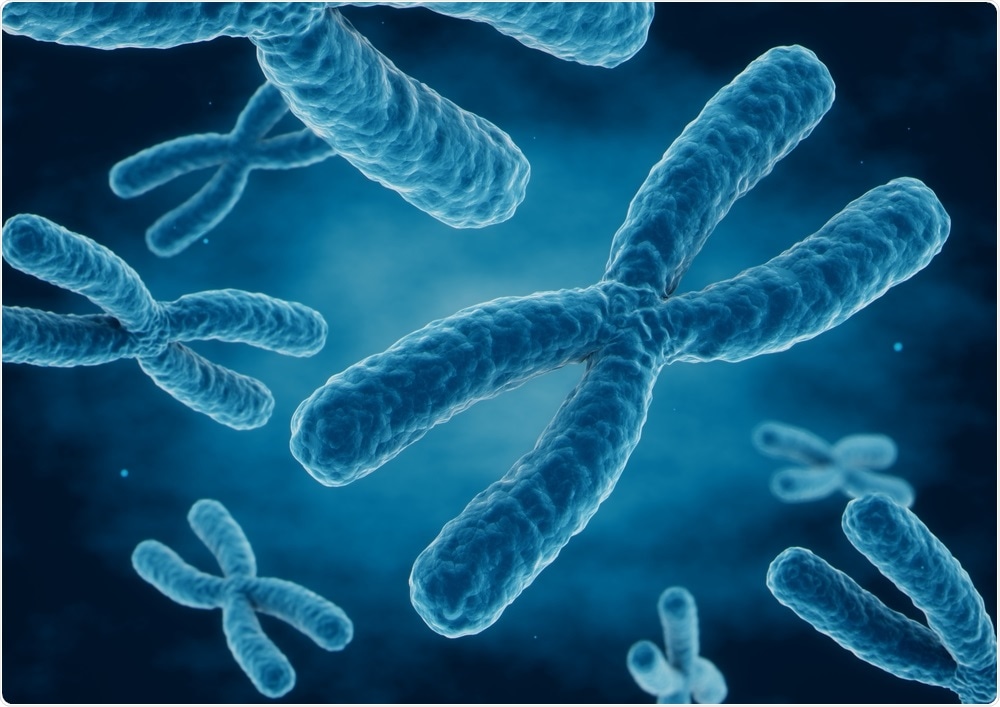News-Medical speaks to Dr. Dan Lavery about the LouLou Foundation, a non-profit organization dedicated to CDLK5 Deficiency Disorder.
Could you please tell us about the LouLou foundation? Why did the foundation aim to tackle CDKL5 deficiency?
The Loulou Foundation is a private, non-profit foundation dedicated to developing meaningful therapeutics, and eventual cures, for CDKL5 Deficiency Disorder (CDD).
It was founded in 2015 by a family touched by CDD, and since its inception, the Foundation has focused on therapeutic development, which was lacking in the CDD community, and not on patient education and clinical standards of care, which have been very effectively served by patient organizations working at the national level.
What is CDD?
CDKL5 Deficiency Disorder (CDD) is a rare disorder which is caused by mutations in the CDKL5 gene. Nearly all CDKL5 mutations leading to the disorder arise de novo and lead to loss of function of the CDKL5 gene.
Patients living with CDD show a significant neurodevelopmental delay, including severe hypotonia, motor and visual impairment, and little to no communication skills. In addition, CDD patients suffer gastrointestinal, respiratory, and sleep issues, and a complex profile of epileptic seizures which are, in general, poorly controlled by medications. Most CDD patients will thus require near-constant care for their entire lives.
Recent estimates place the incidence of CDD at approximately one in 40,000 live births, making it one of the most common monogenic epileptic disorders. Several hundred CDD patients have been diagnosed worldwide, but many thousands more remain to be identified.
While several clinical trials are underway for novel therapeutics for CDD, there are no current therapies for the neurodevelopmental symptoms associated with CDD.

Image Credit: Evgeniy Kalinovskiy/Shutterstock.com
90% of children affected by CDKL5 are girls. Why is this?
It is believed that this is because the CDKL5 gene is located on the X chromosome. As girls have two X chromosomes and boys have only one, the expression of the two X chromosomes in girls is balanced to the single copy in boys through a process called X inactivation, in which one of the two X chromosomes in each cell is randomly but stably silenced.
In girls with CDD, carrying in each cell a mutant CDKL5 gene on one X chromosome and an unmutated, “wild type” CDKL5 gene on the other, X inactivation means that half of all of their cells express the mutant CDKL5 gene and the other half of their cells express the unmutated CDKL5 gene.
In boys carrying a CDKL5 mutation on their single X chromosome, all cells express the mutant CDKL5 gene. One hypothesis is that since in boys, all cells are expressing the mutant CDKL5 gene, they are in general more severely affected than girls, and many may not survive to term. This could explain the skewing of the population of CDD patients toward girls (80-90%) over boys (10-20%).

Image Credit: Chiari VFX/Shutterstock.com
Why is it important to get an early diagnosis of CDD?
Early diagnosis of CDD will allow the CDD patient and family to benefit from a more defined clinical treatment regimen, particularly as more therapies developed specifically for CDD become available; and may avoid testing treatments that are known to be contraindicated in CDD patients.
Early diagnosis can also lead to inclusion in robust therapy programs (physical, vision, occupational, etc.) that can be of greater benefit with earlier intervention.
Early diagnosis can also allow families to connect with the CDD community, to learn from and share with other families living with CDD, to become active in the community, and to learn about potential clinical studies involving CDD patients and families.
Why was it important to receive recognition for this disease from the WHO and get an ICD-10 code?
There are many advantages to having a specific ICD-10 code assigned by the WHO to CDD. The first is that it allows clinicians to identify CDD patients in medical records using an unambiguous code.
In the past, a series of different codes could have been used to classify CDD in a patient’s medical records, including “generalized epilepsy,” “atypical Rett syndrome,” or even just “genetic mutation.” This made tracking of patients, medications, and therapies for CDD virtually impossible.
Now, with a unique ICD-10 code, all CDD patients can be identified and tracked, for epidemiological and clinical therapeutic studies. Also, an ICD-10 code is the recognition that CDD is a distinct, clinically and genetically defined disorder, and should not be confused with or lumped together with some larger syndromic diagnoses like atypical Rett syndrome or West syndrome.

Image Credit: LouLouFoundation
As you now have an ICD-10 code for this disease, do you believe this will help in monitoring the number of people with this disease?
Yes, this will allow us to track new diagnoses, and with some effort, it may also help us identify and track patients with CDD who might have never received an accurate diagnosis.
What does this classification mean for people living with CDD? How will this improve their quality of life?
For patients and families living with CDD, the ICD-10 code allows them to have a clearly defined, distinct diagnosis that allows them to access truly relevant information from their clinicians and other families living with CDD. This alone can improve the quality of life of the patient and family.
However, the specific ICD-10 code for CDD vastly improves the quality and scope of epidemiological and clinical studies on the disorder, including offering the families the opportunity to learn about clinical trials for new treatments for CDD.
Already our community has one active Phase 3 and several active Phase 2 trials specific to patients with CDD.
What are the next steps in your research in CDD?
As mentioned, there are already Phase 2 and Phase 3 studies ongoing with CDD patients for the evaluation of next-generation anti-seizure medications, which might also impact other aspects of the disorder beyond seizures.
Likewise, there are two publicly announced pre-clinical programs at experienced rare disease companies that are using virus-based gene therapy approaches to offer potentially disease-modifying therapeutics for CDD.
In addition, more research is being conducted to learn more about the basic mechanisms of the disorder and to discover novel pathways to target for improved treatment of the disorder.
Where can readers find more information?
Read more about the LouLou Foundation
CDKL5 Research
Read more about CDKL5 Deficiency Disorder
CDKL5 Alliance, an umbrella group of CDKL5 patient groups worldwide, which help families connect with their local CDKL5 community.
About Dan Lavery
Daniel J Lavery, Ph.D., is the Chief Scientific Officer at the Loulou Foundation, and the Director of the CDKL5 Program of Excellence in the Orphan Disease Center at the Perelman School of Medicine, University of Pennsylvania, USA.
Before joining the Loulou Foundation in May 2017, Dan was Science Director, Discovery Systems Biology, at CHDI, a private foundation dedicated to Huntington’s disease therapeutic development.
Previously, Dan has worked in pharma and biotech including GSK and Purdue Pharma, studying CNS disorders such as neuropathic pain, schizophrenia, and ALS, using systems biology and genome-scale data mining to identify novel disease pathways, and developing repurposing strategies to drive rapid clinical development.
Dan trained at Johns Hopkins University, Mount Sinai School of Medicine, and the University of Geneva, Switzerland.
He is the author or co-author of over 30 primary research articles, reviews, book chapters, and patents.